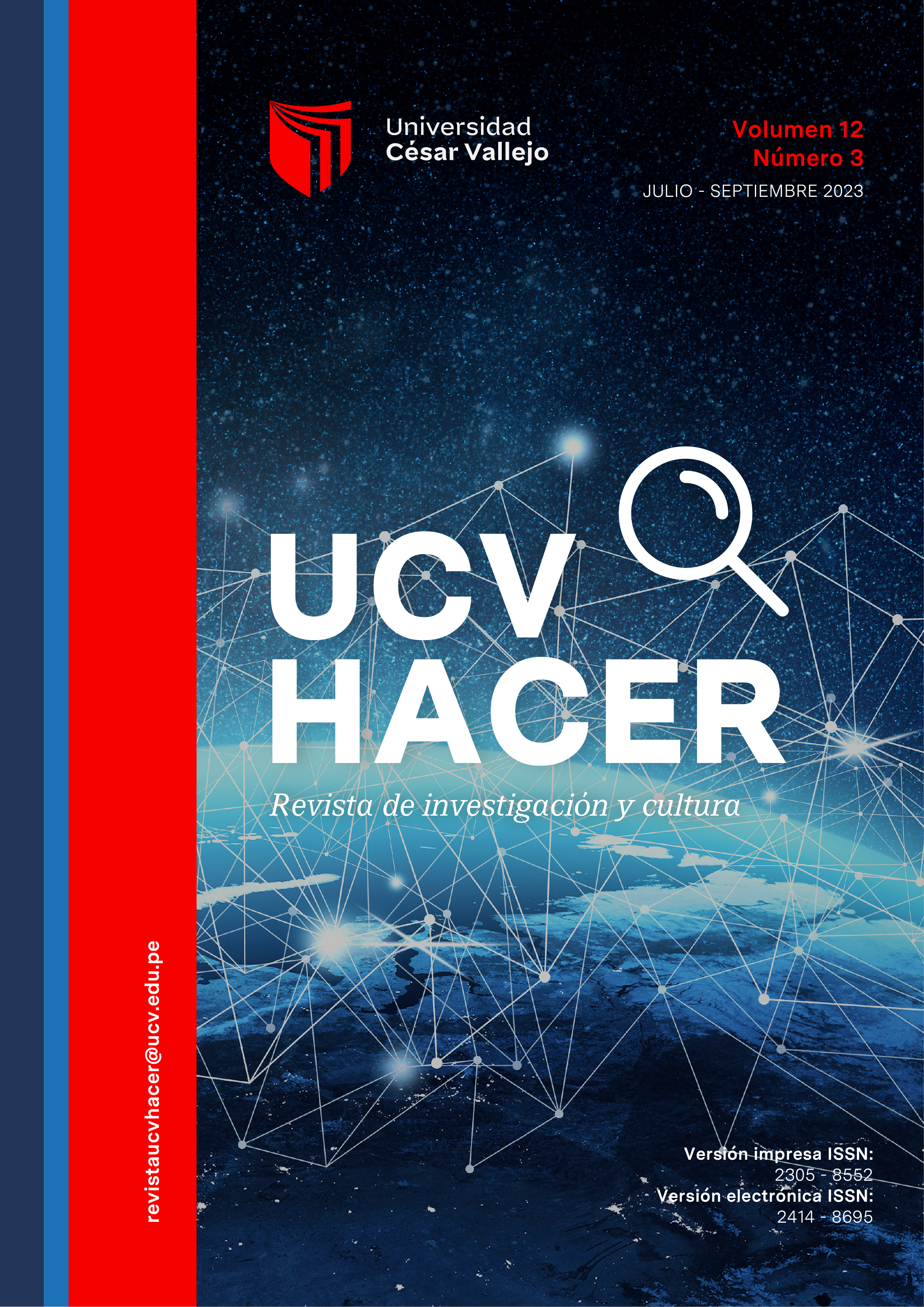Addition of aloe vera gel as a replacement for superplasticizer in self-compacting concrete f’c = 280 kg/cm2
DOI:
https://doi.org/10.18050/revucvhacer.v12n3a6Keywords:
Self-compacting concrete, Fluidity, Viscosity, CompressionAbstract
The main objective of this research work focuses on determining the effect of adding aloe vera gel as a replacement for superplasticizer in self-compacting concrete f’c = 280 kg/cm2. The present research work is considered according to the type
of data, it is of a quantitative approach and a quasi-experimental design with a scientific, hypothetical-inductive method, and of a correlational level. For the investigation, 3 designs of self-compacting concrete were carried out, including the standard sample with superplasticizer additive and the replacement additions of aloe vera gel, where the tests of physical characteristics in the fresh state, fluidity and passage capacity were carried out. The evaluation of the mechanical property to the hardened state, compression resistance was also carried out. In addition, the significant incidence (Sig. <0.001) of the direction by values in the implementation of the process was found through the ANOVA with the SPSS program. It is concluded that the addition of aloe vera gel does not have a greater incidence with respect to the superplasticizer additive in self-compacting concrete considering the expansion flow, viscosity and passage capacity, in terms of compressive strength of aloe vera gel additions. they exceed the specific compressive strength, but fail to overcome the standard strength. Of the percentage of additions, the highest performance was 3% with 448 kg/cm2.
Keywords: Self-compacting concrete, fluidity, viscosity and compression.
Downloads
References
Aburto, Z., Alvarado. H. y Vásquez. A. (2018). Influencia del aloe-vera sobre la resistencia a la compresión, infiltración, absorción capilar, tiempo de fraguado y asentamiento en un concreto estructural. Sciendo, 21(2), 105-118. https://revistas.unitru.edu.pe/index.php/SCIENDO/article/view/1887/1809
Arias, J., y Covinos, M., (2021). Diseño y metodología de la investigación. Enfoques Consulting. https://gc.scalahed.com/recursos/files/r161r/w26022w/Arias_S2.pdf
Artunduaga, K., Vargas, D., y Barrera, O. (2021). Conservación de las propiedades nutraceúticas del Aloe vera (Aloe barbadensis Miller), mediante técnicas de secado. Revista Ingeniería y Región, 25, 6-21. https://journalusco.edu.co/index.php/iregion/article/view/2818
Cedeño, H., Chávez, J., Macías L., y Ortiz, E. (2022). Combinación de mezclas de agregados gruesos y finos pertenecientes a la cantera uruzca para diferentes resistencias de hormigón. Revista científica INGENIAR, 5(9), 23-38. https://journalingeniar.org/index.php/ingeniar/article/view/69/96
Escobar, M. y Mercado, M. (2019). Un análisis documental de su uso y aplicación en el contexto de la era digital. Revista La Propiedad Inmaterial, 28, 273–293. https://doi.org/10.18601/16571959.n28.10
Esteban, N. (2018). Tipos de Investigación. http://repositorio.usdg.edu.pe/handle/USDG/34
Fernadez, P., Vallejo, G., Livacic, P. y Tuero E. (2014). Validez Estructurada para una investigación cuasi-experimental de calidad. Se cumplen 50 años de la presentación en sociedad de los diseños cuasi-experimentales. Revista Anales de Psicología, 30 (2), 756-771. https://dx.doi.org/10.6018/analesps.30.2.166911
Hernandez, C., y Carpio, N., (2019). Introducción a los tipos de muestreo. Instituto Nacional de Salud [en línea], 2(1), 1-4. https://doi.org/10.5377/alerta.v2i1.7535.
Martínez, A. (2019). La entrevista en profundidad y la observación directa: observaciones cualitativas para un enfoque holístico. https://acmspublicaciones.revistabarataria.es/wp-content/uploads/2023/05/67-Martinez-Entrevista-en-profundidad-2019-2023-pp739-749.pdf
Mejía, M. (2021). Aproximación epistemológica al concepto de método en la investigación científica y la enseñanza. https://repositorio.urp.edu.pe/handle/20.500.14138/4100
Orteaga, A., Barrantes, L., Casallas, B., y Cortés, N. (2021). Application of green inhibitors for corrosion control in metals. Review. Revista DYNA [en línea]. (PDF) Application of green inhibitors for corrosion control in metals. Review (researchgate.net)
Pérez B. Minjares J., Martinez J., Baez J., Candelas M. (2019). Composición Química, Propiedades Físicas y Reológicas del mucílago de Aloe barbadensis Miller. Universidad Juárez del Estado de Durango.
Ramos, C. (2021). Diseños de investigación experimental. Diseños de investigación experimental. Revista de divulgación científica de la Universidad Tecnológica Indoamérica, 10(1), 1-7. https://dialnet.unirioja.es/servlet/articulo?codigo=7890336
Sika, (2020). Aditivos para concreto, una visión actual. https://per.sika.com/content/dam/dms/pe01/4/Aditivos%20para%20Concreto_Brochure.pdf
Sotomayor, C. (2019). Una mirada a la durabilidad y sostenibilidad de las construcciones en concreto armado del siglo XXI. Consulcreto, mirada.pdf (consultcreto.com)
Useche, M. y Artigas, W. (2021). Multimétodos Online: Estrategias de Investigación en el Ámbito Empresarial. En Municipalidad de Lima. (2021). Una mirada a la investigación y a la responsabilidad social. Fondo Editorial Municipalidad de Lima. https://www.researchgate.net/publication/354728387_Multimetodos_Online_Estrategias_de_Investigacion_en_el_
Ambito_Empresarial
Downloads
Published
How to Cite
Issue
Section
License
Copyright (c) 2023 Filiberto Freddy Peñaranda Tavera, Javier Reynoso Oscanoa

This work is licensed under a Creative Commons Attribution 4.0 International License.










